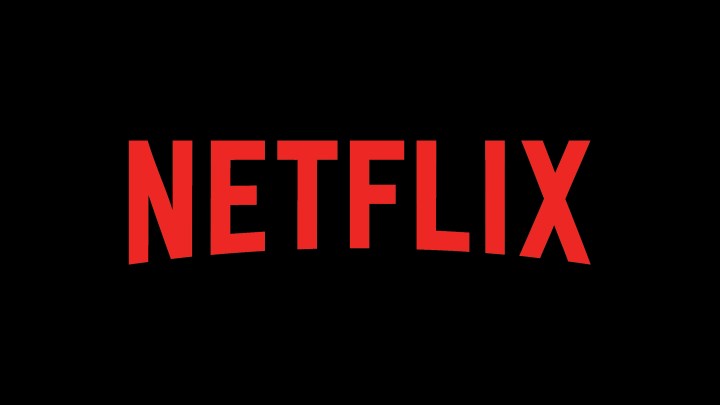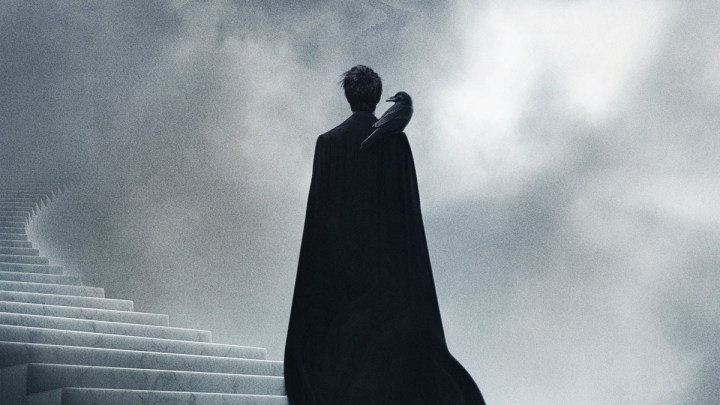The Sandman, Neil Gaiman’s iconic and seminal exploration of dreams, fantasy, and the occult, is getting a lush adaptation on Netflix. Famously described by Norman Mailer as “a comic strip for intellectuals,” The Sandman is among the finest pieces of storytelling and artistry we’ve seen in the comic book genre. It is famously challenging, thought-provoking, philosophical, and unwilling — or perhaps unable — to confine itself in any given category. Like its famously elusive protagonist, The Sandman flows, twists, and turns throughout a story that remains engaging, even if it is not always approachable.
Reviews for the show have been strong out of the gate; it currently sits at an impressive 86% on Rotten Tomatoes. Critics call it loyal to a fault to its source material, praising its production values, ambition, and willingness to bring Gaiman’s vision to life. The Sandman‘s positive reception is a win in and of itself; like Alan Moore’s Watchmen, Gaiman’s graphic novel was often considered too unyielding for a traditional adaptation. The word “unfilmable” often accompanied its title, despite several attempts to bring it into live action.
So why now? Why is this the right time to adapt The Sandman? If anything, now’s the worst possible time to do it. We live in the age of “content,” when entire movies can be scrapped to maximize profits and investments. Artistic integrity takes a backs eat when CEOs and studio heads need to answer to Wall Street. Is it wise to release a notoriously inaccessible project in such a climate? And is Netflix, the king of impatience, the right home for a story that stands out for its slow-burn approach?
The problem with Netflix

Netflix started the streaming boom we are currently living in, building its empire through acquired and, eventually, original content. The streamer became known as the land of “yes,” throwing copious amounts of money at top talent in an effort to place itself as a legitimate film and television studio. And it worked … well, kind of, anyway.
Although not without its flaws, Netflix has an impressive collection of original films, many of which have become major players in awards season. The streamer also has a slew of certified hits, with projects like the above-average Extraction and the truly pitiful Red Notice ranking among its most-streamed movies ever. However, this winning formula is already showing blatant cracks, leading many to believe the impressive empire will crumble sooner than expected.
For starters, Netflix is impatient. If something isn’t a hit right out of the bat, the streamer pulls the plug without a second thought. Promising shows that could’ve found an audience over time, like I Am Not Okay with This, Raising Dion, and The Society, get axed with little to no explanation. Deadline reported that the recently canceled First Kill failed to reach Netflix’s threshold for completion of episodes, adding further insight into how the streamer treats its properties. With Netflix, it’s all about the metrics. Nobody knows anything except the algorithm.
Will the metrics be on The Sandman‘s side? Gaiman’s comic is a slow burn if ever there was one, featuring weighty and, at times, demanding themes blended into a story that tries and barely succeeds in acting more traditional. The Sandman deftly juggles metaphysical concepts and ideas, personifying them with compelling characters that make the journey more engaging, if not necessarily more digestible. On paper, it works because of Gaiman’s sharp and insightful words, which, accompanied by the richly unique art of numerous artists, including Sam Keith and Bryan Talbot, construct a world of fantasy and awe that beautifully and accurately conveys its ambitions.
Netflix’s The Sandman pulls the impressive feat of replicating its source material’s striking visuals in service of its abstract story. However, keeping the story’s flow and themes nearly intact might be shooting itself in the foot, especially when the place it calls home is infamous for being in a perpetual state of rush. Viewers will find The Sandman challenging, as they should. It’s a work of art that rewards patience and commitment, two things that Netflix doesn’t typically understand.
How can the streamer expect this daring project to resonate with the very audiences it trained to become disengaged with slow-burn storytelling? Is Netflix willing to take the time to develop The Sandman, or does it expect to triumph on name recognition alone? Does The Sandman even have that kind of pull with modern audiences? It isn’t your average DC property; The Sandman cares more about the spectacle that takes place within. It’s not The Witcher, and it’s certainly not Game of Thrones. The Sandman is its own thing, a corner of fantasy inhabiting a place where the genuine awe comes from ideas rather than execution. Does Netflix understand this? Does it even want to?
Who is talking about this?

Circling back to First Kill, its showrunner, Felicia D. Henderson, also blamed Netflix’s lack of marketing for the show’s abrupt cancellation. Indeed, the streamer is infamous for never putting any marketing effort whatsoever into some of its freshman shows, and for years, it didn’t need to. People ended up watching anything on Netflix out of boredom or genuine engagement with the platform’s catalog. Shows like Virgin River are massive successes on the streamer, but no one ever talks about them, to the point where many people might not even be aware of them.
Recent developments have proven that Netflix’s formula is unsustainable. Word of mouth can do wonders for a project — it led the superior Top Gun: Maverick to a whopping $1.3 billion at the box office. But word-of-mouth can only do so much, especially for original projects without a built-in fan base. Most of Netflix’s cancellations come from audiences not being aware of the show in the first place; how can they watch something they don’t even know exists?
To be fair, Netflix did mount a considerable marketing effort to support The Sandman. Their campaign relied heavily on Gaiman, recognizing him as the property’s true star. In a bizarre albeit admirable choice, the show chose not to cast any genuine stars. Sure, it has Gwendoline Christie — a truly inspired choice to play Lucifer Morningstar — plus Stephen Fry and even Patton Oswalt. However, it lacks a major Hollywood star, the kind of actor that would make sense in a big IP like this; there’s no Henry Cavill here, no Winona Ryder, or Jason Bateman. Netflix pulled this trick before with great success, casting mostly unknown actors in some of its biggest successes — Bridgerton, Never Have I Ever, and the Haunting shows come to mind. But are audiences expecting something more from its comic book content? The Sandman might have benefited more from having a “leading man” in the title role.
Aware that Gaiman alone wouldn’t sell the show, The Sandman lived up to its geek credentials by having a significant presence at this year’s Comic-Con. The show had a panel with most of the major players, debuting a trailer that looked promising and gave fans hope for a show that didn’t bastardize the source material as many other Netflix adaptations do — I’m looking at you, Persuasion. But was it enough? No, it wasn’t. Any noise The Sandman might have caused was all but drowned by the roaring that came courtesy of HBO’s House of the Dragon and the MCU’s avalanche of Phase 5 and 6 news. Even DC’s measly panel was more impactful than The Sandman‘s, mainly due to a lightning-shooting Dwayne Johnson.
Netflix tried to generate buzz for The Sandman, but did theit try hard enough? Any effort seems considerable when everything that came before is basically nonexistent. However, the streamer doesn’t seem to understand that a good marketing campaign can make the difference between a hit and a flop. Netflix can no longer survive on reputation alone, mainly because its reputation is in the gutter. And while most of the industry is currently too focused on hating Warner Bros. Discovery for its treatment of HBO Max, Netflix doesn’t have enough goodwill to launch a major IP into the void and hope it works on name recognition and loyalty alone.
A match made in hell

So what is the future of The Sandman on Netflix? In the best-case scenario that it performs according to Netflix’s desired metrics, the show will last for three seasons before coming to a quiet and unceremonious end. Fantasy shows seem to be hit-or-miss on Netflix. The Witcher was very strong out of the gate, but season 2 saw a considerable decline in audience interest. Similarly, projects like Locke & Key and even Shadow and Bone are far from the streamer’s most impactful entries, even if they perform well enough to guarantee a prolonged stay in the catalog.
On the other hand, the worst-case scenario is The Sandman crashes and burns, leading Netflix to pull the plug sooner than expected. I don’t see it happening, though; Netflix will want to save face and grant the show a second outing before deciding its fate, especially considering Neil Gaiman’s prominent involvement.
Like every other streamer and network, Netflix is on the lookout for its next big franchise — the next Game of Thrones. Sadly, The Sandman isn’t that. Rich in ideas instead of worldbuilding, Gaiman’s work is meant to be enjoyed, analyzed, dissected,and appreciated. However, it’s somewhat limited in its extent; The Sandman is not the type of property that can produce endless spinoffs focusing on the past and future of its setting. What spinoff potential it does have either has already been done (Lucifer on Fox) or is being developed for another platform (Constantine and Dead Boy Detectives for HBO Max). Its beside the point, as the show’s intricacies come from within, offering very little in terms of exploitation and overt franchising. If Netflix thought The Sandman was its next big thing, it thought wrong, and I think it knows that. Some dreams are best left unrealized.
Editors' Recommendations
- Netflix’s 3 Body Problem is missing the one thing that made Game of Thrones great
- Everything coming to Netflix in February 2024
- Forget Loki; Invincible is the best superhero show you’re not watching right now
- Is Netflix’s hit show One Piece too faithful to the manga its based on?
- Everything coming to Netflix in September 2023




